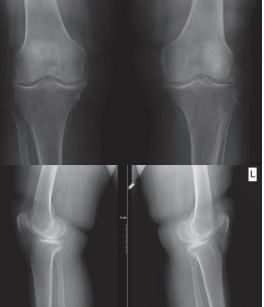Calcium pyrophosphate deposition disease (CPPD) is a crystal arthropathy, and may present with various clinical manifestations such as asymptomatic CPPD, osteoarthritis with CPPD, acute CPPD crystal arthritis (formerly pseudogout), and chronic CPPD crystal inflammatory arthritis. It is known that aging, trauma and osteoarthritis are major risk factors for CPPD. Acute CPP arthritis may occur as monoarticular or oligoarticular and usually involves large peripheral joints such as the knees, wrists and ankles. CPPD is characterized by sudden onset of severe pain, swelling and periarticular erythema, and systemic symptoms such as fever, chills, and weakness may occur. On the other hand, axial CPPD has been reported rarely and most cases appear with symptoms related to a mass effect such as foramen magnum syndrome, spinal stenosis, radiculopathy, myelopathy, synovial cyst or cauda equina syndrome. In addition, there are fewer reported cases of spinal CPPD that cause neck and back pain. This clinical condition should be considered in the differential diagnosis of acute neck and back pain.
Cite this article as: İzci Duran T., Özgen M. Two cases of calcium pyrophosphate deposition disease (CPPD) presented with spondylodiscitis. Eur J Rheumatol 2020; 7(2): 84-7.



.png)
